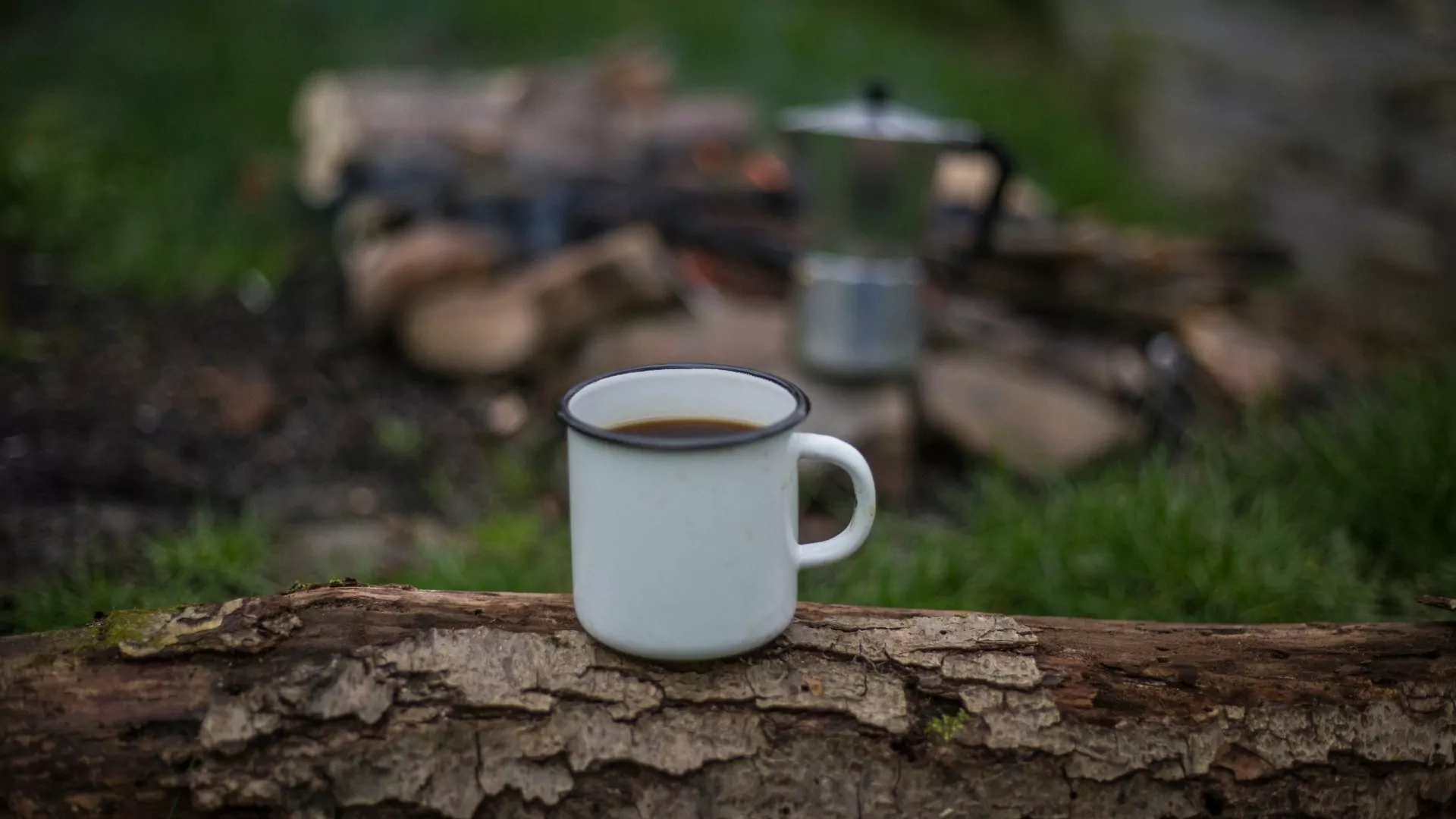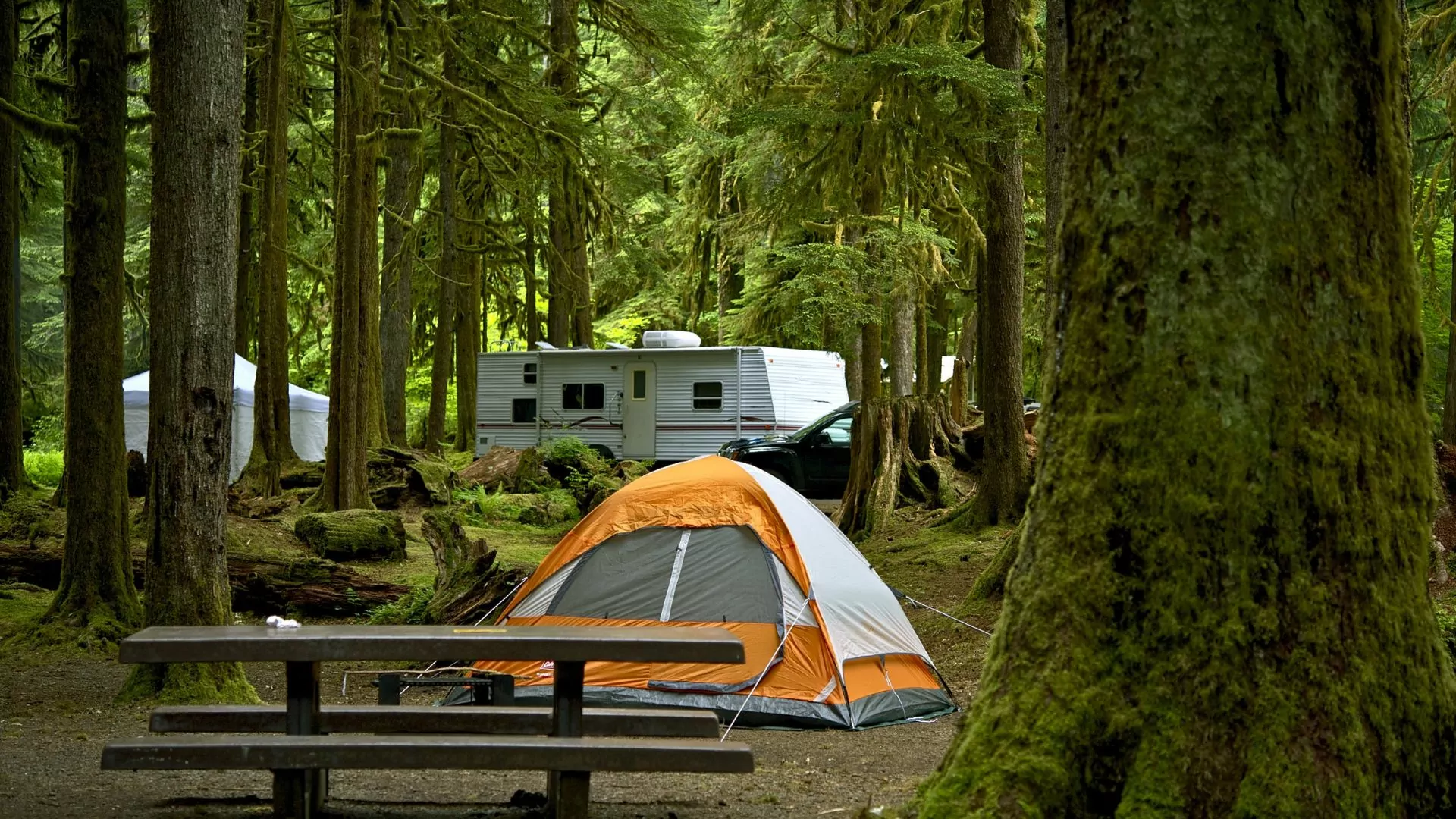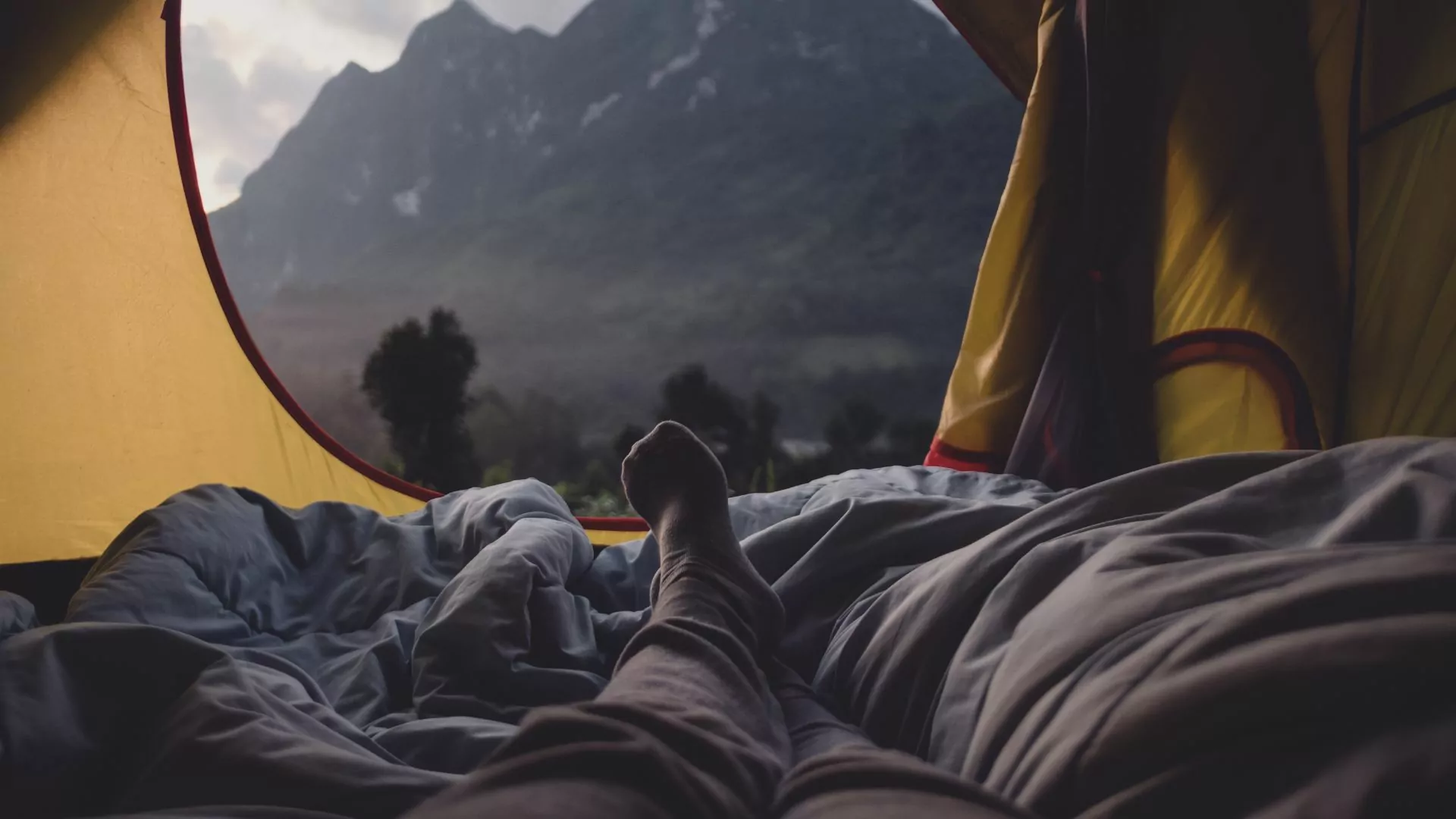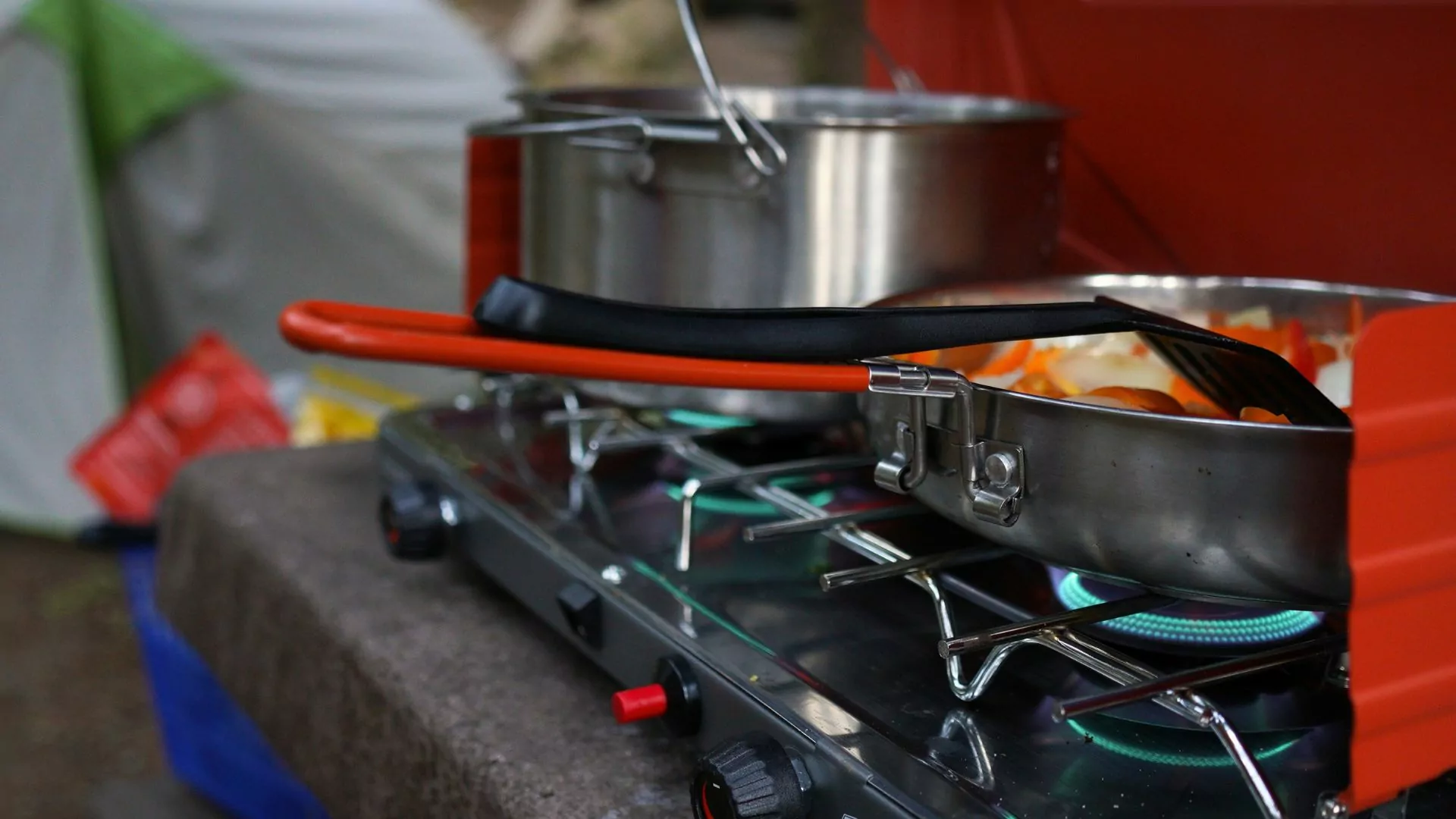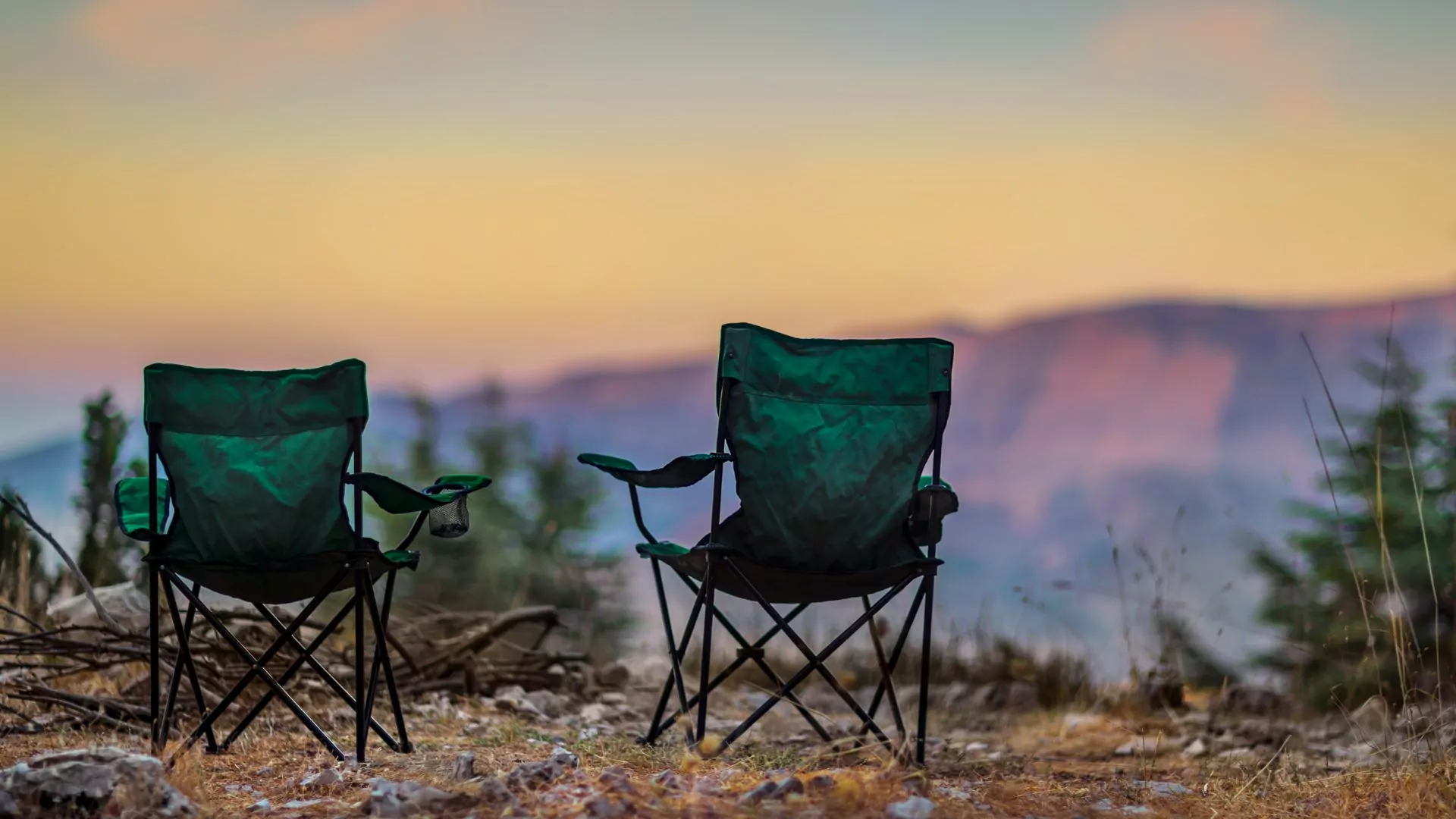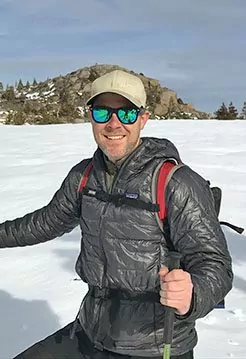What to bring camping

Forty-five years later, I can still hear it.
The sound of camping.
It’s not a specific bird’s first chirp at dawn or the crescendo of a tent zipper, or a distant outboard peeling back the blanket of fog that hovered over the lake, hunting for muskie.
What I remember most is the sound of a stove, the mechanical, repetitive clank of a green, model #413F Coleman two-burner camp stove being primed to life. It’s unmistakable red supply tank a call sign.
My mother would light it each morning, first for coffee brewed in a blue enamel percolator, and then eggs burnt at the edges in cast iron. A lit cigarette would teeter on the edge of the checkered picnic table that became the equipment catch-all of our camp kitchen. Paper towels. Collectible McDonald’s cups with Muppets on them, saved from drive up to use at home. The half-smoked Salem would threaten to release its lengthening ash into the damp dawn grass with each metallic clank of the pump.
If I wasn’t afraid and my brothers would approve, I’d sleep in the big canvas tent my parents would erect next to the camper at our annual site, 100 yards above a remote lake in eastern Ontario, Canada. The aptly named Moosehaven Lodge.
The camper, too, was decorated with the Coleman brand, but it sported a 1970’s yellow-beige. It had hand crank slide-outs and musty, brown paisley cushions that I can still smell.
I recently found the 1960s-era stove on eBay. An original one will cost about $100, and I’m thinking of adding it to my camping gear list to gauge its heartiness alongside a host of its modernized two-burner offspring from companies like Camp Chef, GSI, and Snow Peak. I wonder if they can compete. That Coleman-issue camp green holds in its hue so much camping history, as traditional to the pastime as granola bar crumbs and the stench of slow-burning mosquito-repellent coils.
Maybe those early morning memories are at the root of my propensity to dig deep into the makeup of outdoor gear, and as a freelance journalist, to often cover it. Companies send me a lot of their stuff to test, and I’ve given away a store worth of down jackets, stoves, backpacks and headlamps over the years.
There’s a lot of stuff out there to choose from, and my social media algorithms aren’t helping. “Guys, everything you know about camping is wrong!”
To sort through it all, I created a product that helped frontcountry families and backcountry travelers never leave an item behind, it was a lightweight tarp printed with an exhaustive camping gear list compiled from years working as an outdoor professional. It sold well, but I’m more of an idea guy than a business executive, so the company shuttered a few years ago.
Nevertheless, I still use the few tarp samples I have laying around to plan my own trips as a guide, both when leading backpacking trips for Wildland Trekking, as well as for our guided basecamps and inn-based adventures.
Read: What to Pack for a Day hike
Camping Gear
The best camping gear lists are categorized by major system, then supported by ancillary items that make up the whole.
For car camping, you’re likely to bring a bigger stove, like a two-burner, and maybe an aggressive, rapid-boiler that can get a few gallons of water steaming in minutes. Of course, you’ll need propane, and if you have a number of people in tow, it helps to have a larger, home patio-sized propane tank. In turn, you’ll need hoses and connection hardware. Check the stove’s igniter, too, because those are known to fail, so always make sure at least two lighters make your list.
Point is, the big things need a lot of little things in order to work and make for a successful trip, gear-wise. Keep that in mind as you assemble your camping gear list. Oh, and remember that time of year and location should always help drive your decision making. The items below were compiled with a summer camping trip in mind.
This camping gear list, a free digital version of the tarp list I used to sell, is a (mostly) comprehensive, categorized rundown of what you need to enjoy a few days of outdoor fun. Note how it’s assembled by major system, as recommended.
The Essentials:
Tent
- Rain fly/tarp
- Stakes
- Ground cloth
- Cordage/guy lines
Sleep system
- Pad/mat/cot
- Sleeping bag
- Pillow
- Additional liner
Camp Kitchen
- Stove
- Fuel
- Lighter
- Pots & pans
- Plates & bowls
- Cups & mugs
- Cutlery
- Serving utensils
- Tablecloth
- Serving bowls/platters
- Cutting board/prep items
- Specialty items (menu-dependent)
- Wash tubs
- Drying towel
- Soap & sanitizer
- Garbage bags
Food storage
- Cooler(s)
- Ice/ice packs
- Dry goods storage
- Water jug
- Leftover storage
Camp comfort
- Portable table(s)
- Camp chairs
- Awning/shade structure
- Fire supplies (check local restrictions)
- Lighting
- Bug spray
- Books/games/entertainment
Personal
- Headlamp/flashlight
- Warm layers
- Rain layers
- Sleep layers
- Camp shoes
- Toiletries
- Bathroom supplies
- Cellphone charging cord & battery pack
Misc.
- Maps
- First-aid kit
- Sporting goods
- Radio/speaker (always respect neighbors and wildlife)
A backpacking gear list will vary quite a bit from the above, and also include additional major categories given the physical risks, daily travel, terrain, food requirements and clothing layers demanded by an extended trip in remote wilderness. Use the above as a guideline for camping out of a vehicle, at a campground or dispersed sites such as those found on Bureau of Land Management maps and in National Forests.
Your location of choice helps dictate what you’ll bring. If you’re heading to a place known for big temperature swings, like the Sierra Nevada or high desert zones, you’ll likely need to add to your camping gear list a warmer sleeping system and additional layers. You may also need extra fuel because of the additional coffee and hot drinks you’ll be making.
A portable shelter is key when the weather doesn’t cooperate, for example. Waiting out the rain under a shelter playing camp games and snacking isn’t a bad way to spend a day—and much better than wishing you were doing just that while sheltering in a steamed-up car full of wet gear.
REad: How to pack a BACKPACK for hiking
Camp etiquette
It’s critical to understand the reservation process for your campground. If you need a permit, get one. If there’s a fee, pay it.
Finding a campsite in a National Park has become quite the challenge in recent years. There is high demand and often a fair amount of pre-planning involved. It may help to hire a company like Wildland Trekking to tackle those logistics for you.
Either way it is important to abide by all campsite regulations including check-in and departure times, quiet hours, leave no trace practices, and animal proofing.
The included camping gear list covers most park scenarios and private commercial locations. You may need to adjust it for multi-week road trips or larger groups, and always be sure to know the quality of your water source, even in developed campgrounds.
Summer is here, folks. Get out under the stars and enjoy it.



